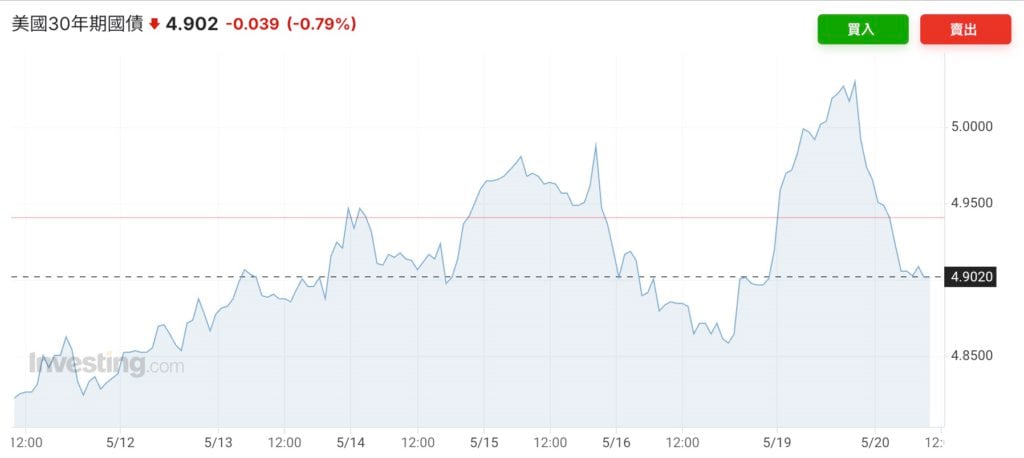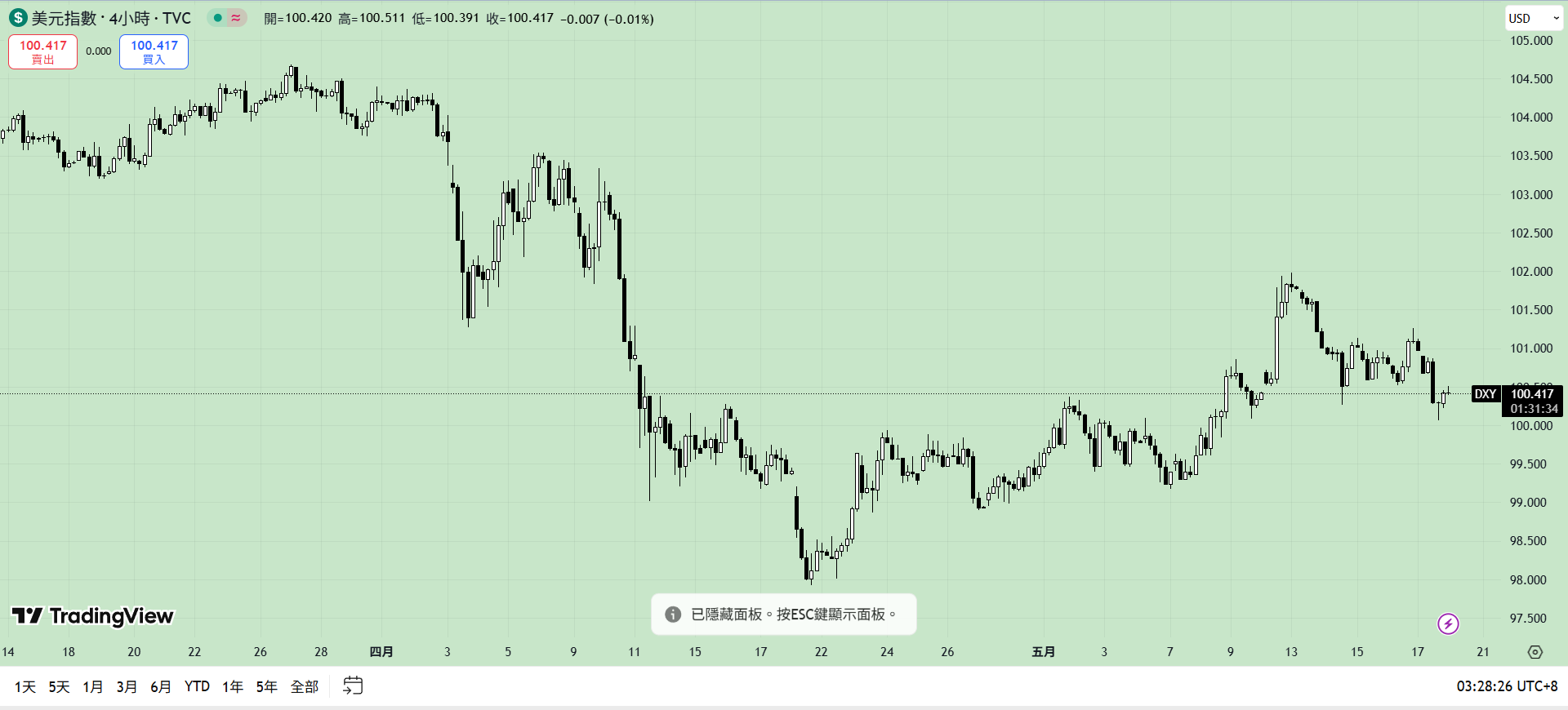According to the latest market data, the US dollar and US government bonds, two assets heavily dependent on US credit, showed a downward trend yesterday (19th). The 30-year US Treasury yield once rose 9 basis points to 5.03%, reaching its highest level since November 2023; the 10-year bond yield also reached 4.56%, close to last month's peak.


Regarding this situation, Bloomberg reported that this decline is closely related to Moody's Ratings, one of the world's top three credit rating agencies, downgrading the US credit rating from Aaa to Aa1 last week. This downgrade marks the first time the US has lost the top AAA rating from all three major credit rating agencies (Moody's, S&P, and Fitch), further intensifying Wall Street's concerns about the US fiscal prospects.
Reasons for Moody's Downgrade: Fiscal Deficit and Political Gridlock
According to Moody's statement, the main reasons for the US credit rating downgrade are the continuing deterioration of the US fiscal situation and challenges from political gridlock. Specifically, Moody's emphasized the following points:
- Surging Fiscal Deficit: The US federal budget deficit continues to expand, with the annual deficit approaching $2 trillion, exceeding 6% of GDP. Moody's predicts that by 2035, the deficit will further rise to nearly 9% of GDP, driven by increased debt interest payments, rising welfare expenses, and relatively low tax revenues.
- Increasing Debt Burden: US federal debt has reached $36.2 trillion and is expected to reach 107% of GDP by 2029, exceeding the post-World War II historical peak.
- Political and Policy Uncertainty: US political polarization has led to inefficient fiscal policy-making, and repeated debt ceiling negotiations have exacerbated default risks. Additionally, tax cuts and trade tariff policies from the Trump administration are further worsening the fiscal outlook.
- Economic Growth Pressure: Moody's noted that Trump's tariff policies could weaken the US's long-term economic growth potential, further intensifying fiscal pressure.
Expert Opinions Polarized
However, while Moody's downgrade shows increasing concerns about the US economic prospects, experts' views on the impact are not consistent.
Elias Haddad, currency strategist at Brown Brothers Harriman & Co., stated in a report: "The synchronized sell-off in the US dollar, US Treasuries, and US stocks highlights the growing loss of confidence in the US economy." He believes the downgrade has intensified market doubts about US assets and may further drive the "de-dollarization" trend.
However, Mark Haefele, Chief Investment Officer at UBS Global Wealth Management, took a more optimistic view, saying: "We believe this credit rating action is a headline risk, not a fundamental market shift. While the downgrade may dampen some 'good news' momentum, we expect it will not have a significant direct impact on financial markets."
Similarly, Alfonso Peccatiello, Chief Investment Officer at Palinuro Capital, also believes that according to the Basel regulatory framework, government bonds rated from AAA to AA- have no difference in capital requirements, thus the downgrade has limited impact on the US Treasury's core position in the global financial system. He added: "Unless investors actively trigger a selling wave, Moody's action should not have a major impact."
Against the backdrop of trade tariffs and tax cuts during the Trump administration, the uncertainty of the US and global economies is increasing. Moody's downgrade of the US credit rating not only highlights the severe challenges facing US finances but also sounds an alarm for the global financial market. The decline of the US dollar and US bonds reflects investors' wavering confidence in the US economic outlook, and the future direction of fiscal policies and their impact on the global economy remains to be closely observed.




